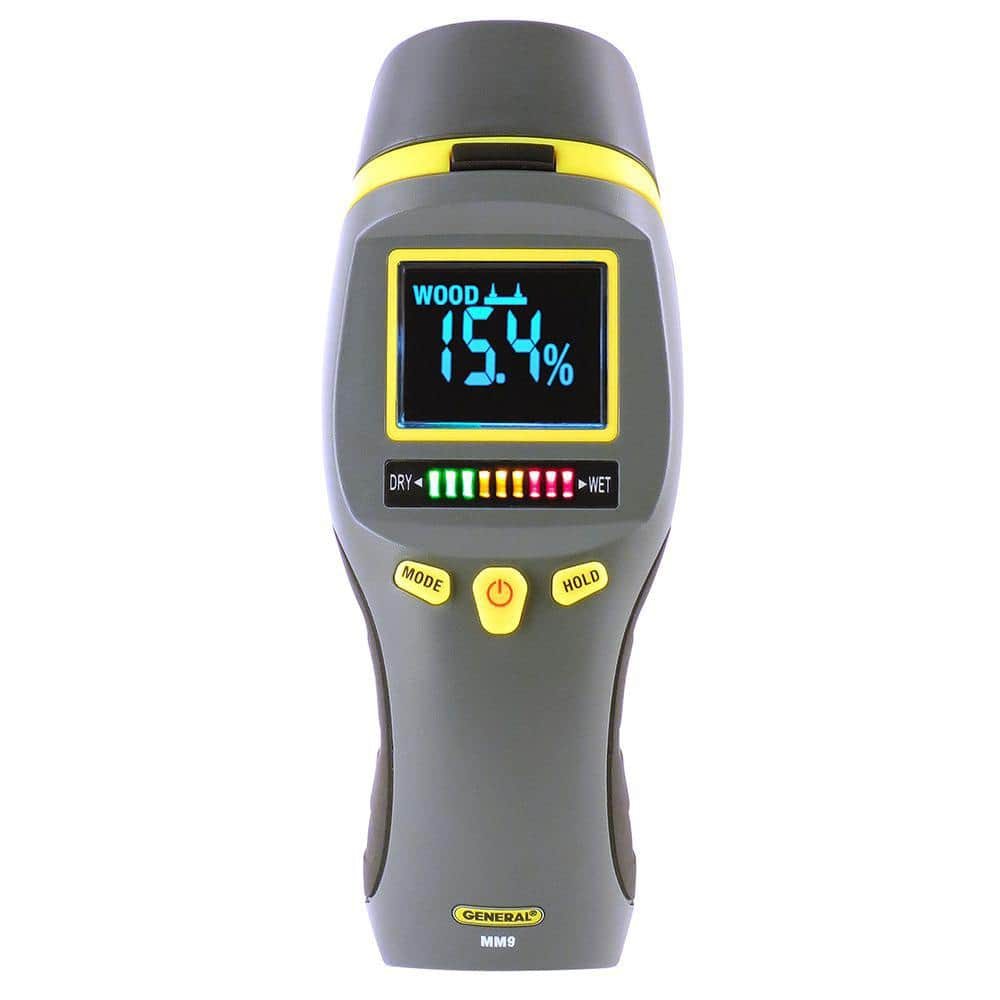The Ultimate Overview to Picking the Right Moisture Meter for Your Requirements
The Ultimate Overview to Picking the Right Moisture Meter for Your Requirements
Blog Article
Explore the World of Moisture Meters: Everything You Required to Know
In the realm of wetness meters exists a world of accuracy and functionality that frequently goes unnoticed. Recognizing how moisture meters operate, the different types offered, and their diverse usages can shed light on their relevance in making sure high quality and effectiveness.
Exactly How Moisture Meters Work
Moisture meters operate by determining the electrical conductivity or capacitance of products to identify the dampness content present. These meters are vital devices across different sectors, consisting of woodworking, agriculture, and building and construction. By making use of different methods such as pinless or pin-type technology, wetness meters offer precise analyses that aid experts make notified choices.
Pin-type wetness meters function by placing the sharp pins into the product being checked. On the various other hand, pinless dampness meters use electromagnetic signals to scan a bigger location without creating any type of damages to the material's surface.
Regardless of the technique utilized, moisture meters play a vital function in protecting against problems such as mold development, architectural damages, or product issues created by excess wetness. Understanding how these meters job is necessary for guaranteeing the quality and honesty of products in different applications.
Types of Moisture Meters
Offered the crucial function wetness meters play in various industries, it is important to understand the different kinds available to experts for accurately assessing wetness degrees - Moisture Meter. There are primarily two primary kinds of dampness meters: pinless and pin-type dampness meters

On the other hand, pinless dampness meters use electromagnetic sensor plates to scan a bigger area of the material without causing any type of damage. This kind appropriates for swiftly scanning large areas and is frequently utilized for floor covering, walls, and ceilings. Pinless meters are hassle-free for taking readings on completed surfaces without leaving any kind of visible marks.
Both types of wetness meters have their advantages and are picked based on the specific demands of the work handy. Recognizing the distinctions between these types is crucial for experts to make exact dampness assessments.
Applications Across Industries
With diverse functionalities, dampness meters discover extensive application throughout various sectors, aiding professionals in ensuring ideal problems for products and structures. In the agriculture market, wetness meters are indispensable for establishing the wetness content in grains, seeds, and hay, making sure quality assurance and avoiding mold development. Building experts rely upon moisture meters to assess the dampness levels in structure products like drywall, concrete, and timber, which is critical for maintaining architectural stability and protecting against concerns like rot or mold. The floor covering industry utilizes wetness meters to gauge the dampness material in subfloors prior to mounting different flooring, preventing expensive problems more due to excess dampness. In the food market, dampness meters are used to check and manage moisture levels in items such as grains, nuts, and dried out fruits to maintain quality and top quality. In addition, wetness meters play a crucial function in the remediation and damage evaluation market by helping professionals address and identify water damages in buildings without delay. Throughout these diverse sectors, moisture meters are essential tools for guaranteeing the quality, safety, and long life of numerous products and products.
Tips for Utilizing Dampness Meters
Make use of the wetness meter's calibration settings to guarantee precise readings when determining the moisture material in numerous products. Calibration is critical for the appropriate functioning of a dampness meter. Before each use, it is suggested to examine and adjust the calibration settings according to the specific product being checked. Additionally, make certain the meter is established to the correct dampness range for the product you are gauging to get one of the most precise results.
When using a pin-type moisture meter, place the pins to the ideal depth recommended for the material being checked. This makes certain that the dampness readings are drawn from the correct depth within the material, click resources giving a more accurate representation of its wetness content. For pinless wetness meters, keep in mind to preserve appropriate contact with the material's surface area to obtain reliable readings.
Regularly inspect and change the batteries in your moisture meter to protect against imprecise analyses as a result of low power. Shop the meter in a completely dry and safe place when not being used to lengthen its life-span and preserve its precision. By adhering to these tips, you can optimize the performance of your wetness meter and acquire exact moisture material measurements throughout different materials.
Upkeep and Calibration
To guarantee the accuracy of moisture content measurements, routine upkeep and calibration of the dampness meter are crucial actions in its appropriate performance. Calibration readjusts the dampness meter to guarantee that it provides regular and trusted results.
Calibration should be carried out regularly, especially if the moisture meter is utilized often or in critical applications where specific dimensions are called for. By keeping and adjusting the dampness meter routinely, individuals can trust the precision of the wetness content dimensions gotten.
Conclusion

To conclude, wetness meters play a crucial function in various markets by accurately gauging the moisture web content of products. Comprehending just how these devices work, the different kinds available, and appropriate maintenance and calibration are crucial for acquiring dependable outcomes. Whether in construction, manufacturing, or agriculture, using wetness meters aids make certain high quality control and performance in processes.

In verdict, dampness meters play a vital role in various industries by accurately measuring the moisture web content of products.
Report this page